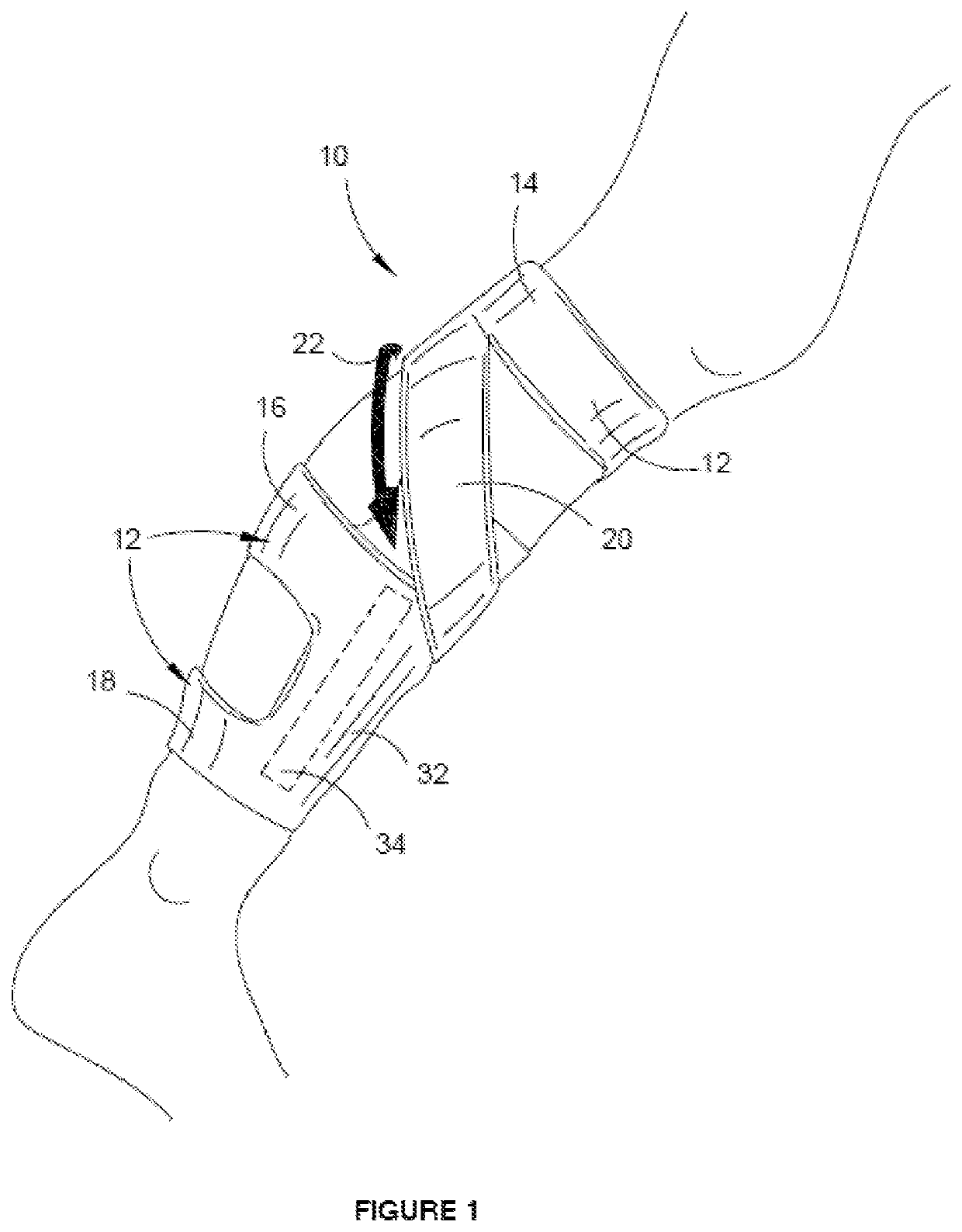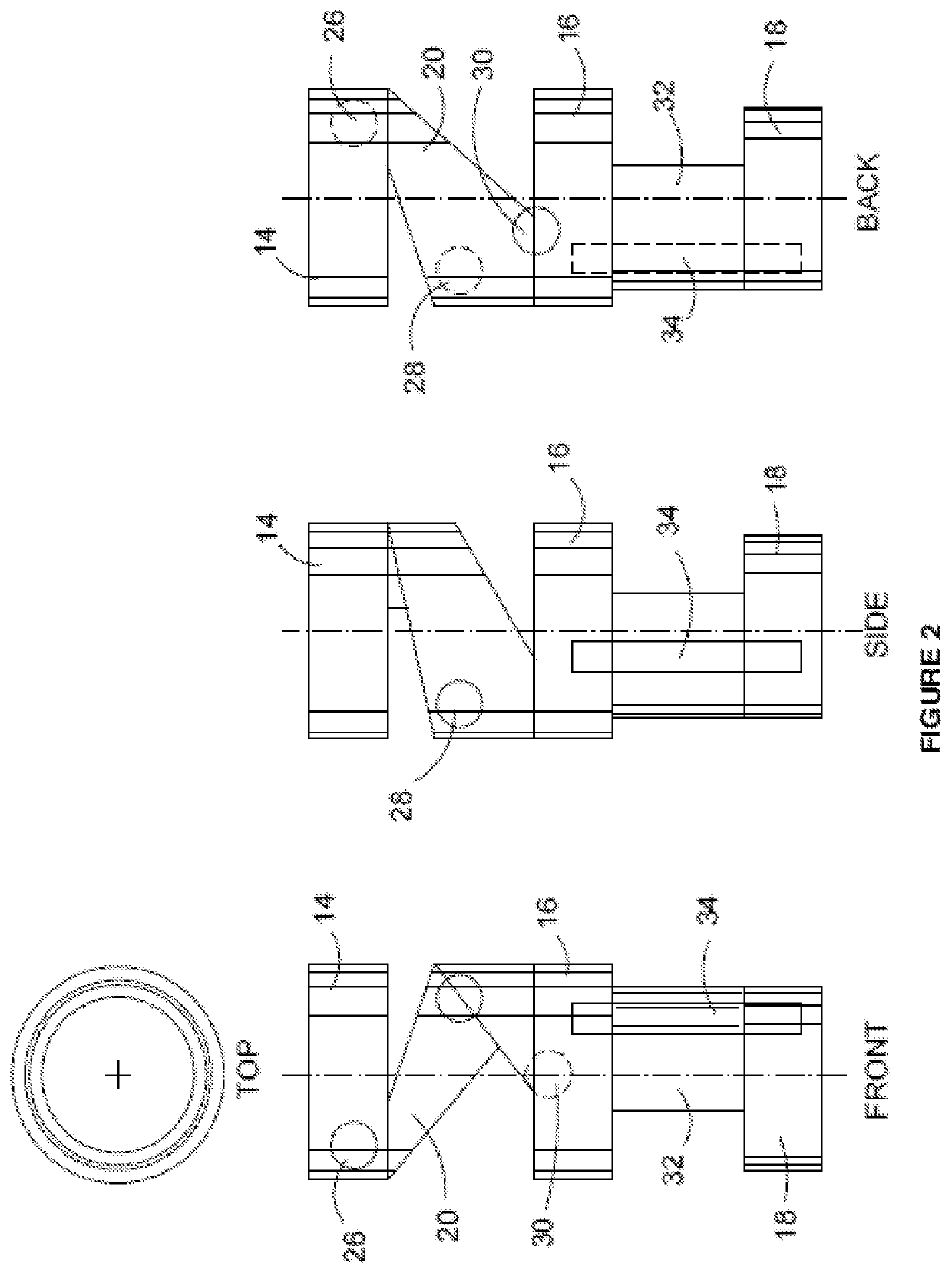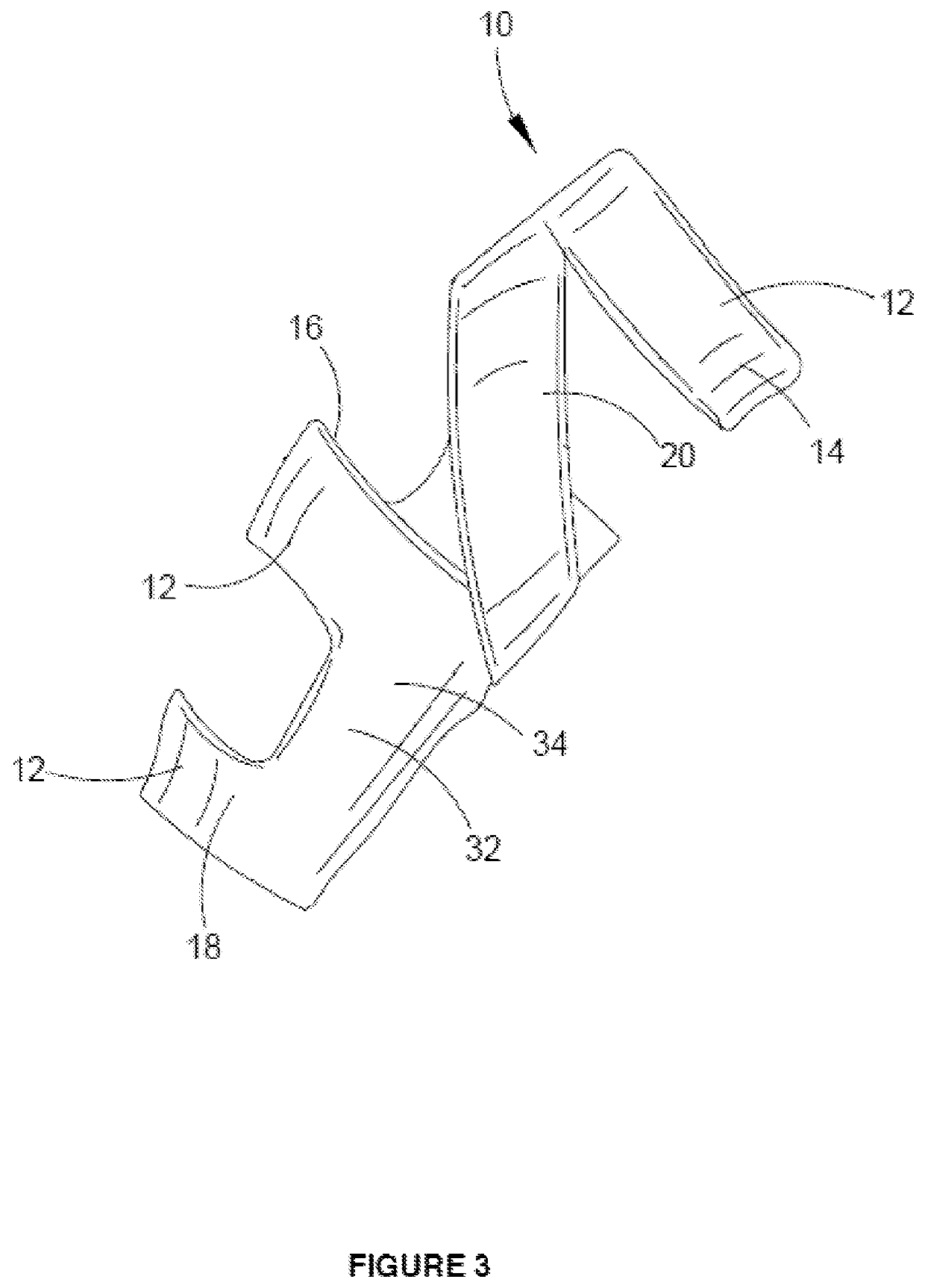Device for the treatment of medial tibial stress syndrome and other conditions of the lower leg
a technology for tibial stress syndrome and other conditions, applied in non-surgical orthopedic devices, medical science, apparel, etc., can solve the problems of inflexibility, muscle imbalance, and few advances in the treatment of mtss over the last few decades, and achieve the effect of releasing the calf muscl
- Summary
- Abstract
- Description
- Claims
- Application Information
AI Technical Summary
Benefits of technology
Problems solved by technology
Method used
Image
Examples
Embodiment Construction
[0065]It is believed that MTSS in athletes, particularly runners, is caused by a combination of calf tightening causing increased pressure at musclo-tendinous junctions and calf torsion leads to periosteal elevation and subsequent inflammation and oedema causing pain and loss of function. It is further believed that applying pressure along the medial border of the tibia to compress the elevated periosteum and at the key musculo-tendinous junctions will help to reverse the pathophysiological process of MTSS and therefore treat and / or reduce the incidence of shin splints.
[0066]By releasing the calf muscle with a calf brace to be herein described, some relief of MTSS has been demonstrated by the present inventors. In addition to MTSS, there are a range of conditions of the lower leg, including the foot, that may benefit from releasing the calf muscle by wearing of a calf brace as will be herein described. These conditions include, without limitation, plantar fasciitis, delayed onset mu...
PUM
 Login to View More
Login to View More Abstract
Description
Claims
Application Information
 Login to View More
Login to View More - R&D
- Intellectual Property
- Life Sciences
- Materials
- Tech Scout
- Unparalleled Data Quality
- Higher Quality Content
- 60% Fewer Hallucinations
Browse by: Latest US Patents, China's latest patents, Technical Efficacy Thesaurus, Application Domain, Technology Topic, Popular Technical Reports.
© 2025 PatSnap. All rights reserved.Legal|Privacy policy|Modern Slavery Act Transparency Statement|Sitemap|About US| Contact US: help@patsnap.com



